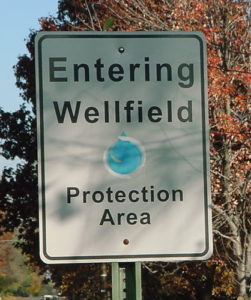 Over 13.8 billion gallons of drinking water is pumped from Marion County wells each year, and over 19,000 acres of land are part of seven wellfield protection areas within Marion County. Within those wellfield areas land uses include residences, businesses and industry.
Over 13.8 billion gallons of drinking water is pumped from Marion County wells each year, and over 19,000 acres of land are part of seven wellfield protection areas within Marion County. Within those wellfield areas land uses include residences, businesses and industry.
There are multiple potential sources of pollution for wellfields including the storage, use, and disposal of:
- gasoline, oil, and other engine fluids,
- cleaners, solvents, paints, road salts/de-icers,
- lawn and garden chemicals, fertilizers, pesticides and many other substances.
Several public water supply wellheads within Marion County have already been impacted by contaminants and have had to be shut down. One way of managing potential future sources of pollutants is through the Improvement Location Plan (ILP) Review by the Technically Qualified Person (TQP) under the Marion County Wellfield Protection Ordinance.
This ordinance provides guidelines and requirements for the development of new businesses uses within the wellfields of the City of Indianapolis with the goal of preventing contamination of the wells that provide the city with water.
When an Improvement Location Plan is submitted for a wellfield area, the Technically Qualified Person reviews the information supplied by the applicant for information such as:
- Any existing uses of the property,
- Brief history of site of new building or addition (usage, historical environmental concerns, abandoned wells, underground storage tanks, septic tanks),
- Vicinity map (U.S.G.S. quadrangle preferred),
- Setbacks, landscaping, screens, walls, fences,
- Sewage disposal facilities,
- Site map (drawn to scale) including:
- All existing and proposed structures,
- Paved and non-paved areas,
- Utility lines (inside and outside structures) including sanitary sewers, storm sewers, storm retention ditches/basins/French drains/dry wells, etc. (both proposed and existing),
- Floor drain locations and outlets,
- Chemical/product storage locations,
- Waste storage locations (including dumpsters),
- Liquid transfer areas,
- Site surface water bodies (streams, rivers, ponds),
- Underground storage tanks and aboveground storage tanks,
- Proposed secondary containment areas for any above ground tanks,
- Description of proposed operations including chemicals/products used or generated, chemical/product storage area descriptions, waste generation quantities, equipment cleaning/maintenance procedures, heating source (oil/gas), liquid transfer/loading areas,
- Methods and locations of receiving, handling, storing, and shipping chemicals/products and wastes,
- Emergency Spill Response measures and reporting.
This material is also reviewed by the Marion County Public Health Department (MCPHD), Department of Public Works and the appropriate water utility for the area. During the review process, the TQP may request further information from the ILP applicant and indicate elements of the submitted business plans that contravene the Wellfield Protection Ordinance and will require modification in order to be approved.
Once the review is complete, a Conditional TQP Letter will be issued to the applicant that will provide approval and requirements for particular aspects of construction and operation of that business as they pertain to wellfield protection. The requirements of the Conditional TQP Letter are also used as a guideline for future inspections of the business by the Marion County Public Health Department.
The ILP and TQP process ultimately aims to prevent future pollution of our most important resource – fresh drinkable water.
